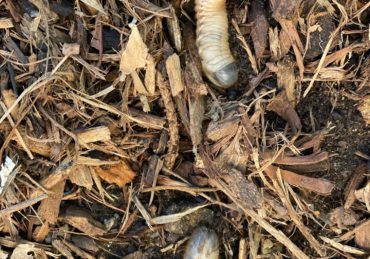As winter settles in, you might wonder how some flowers manage to thrive in the chill. These resilient bloomers not only brighten the dreary landscape but also offer unique charm throughout the season. Take a moment to explore ten remarkable flowers that defy the cold, from the cheerful Pansy to the elegant Hellebore. Each has its own story and role in the winter garden that you won’t want to miss. Curious about how these blooms can enhance your outdoor space?
Why Do Some Flowers Bloom in Winter?
Several flowers bloom in winter to capitalize on the sunlight available before trees fully leaf out, allowing them to photosynthesize and thrive despite the cold.
These hardy flowers have evolved to emerge early, taking advantage of reduced competition for pollinators and resources during this season. Their adaptations, like cold hardiness, enable them to withstand freezing temperatures while still producing vibrant blooms.
Some plants, such as Hellebores and Witch Hazel, specifically time their flowering to align with seasonal temperature changes, ensuring they attract early pollinators. By blooming in winter, these flowers enhance their reproductive success, establishing seeds ahead of the peak growing season.
This resilience not only showcases nature’s beauty but also symbolizes renewal in the cold weather landscape.
Easily hire the best lawn & landscape pros working in your neighborhood.
10 Best Winter Flowers for Brightening Up Cold Weather Gardens
When winter rolls around, you might be surprised to find a variety of flowers still blooming.
Pansies, Hellebores, and Snowdrops are just a few examples that bring color to your garden during the cold months.
Let’s explore these hardy blooms and how they can brighten up your winter landscape.
Pansy (Viola x wittrockiana)
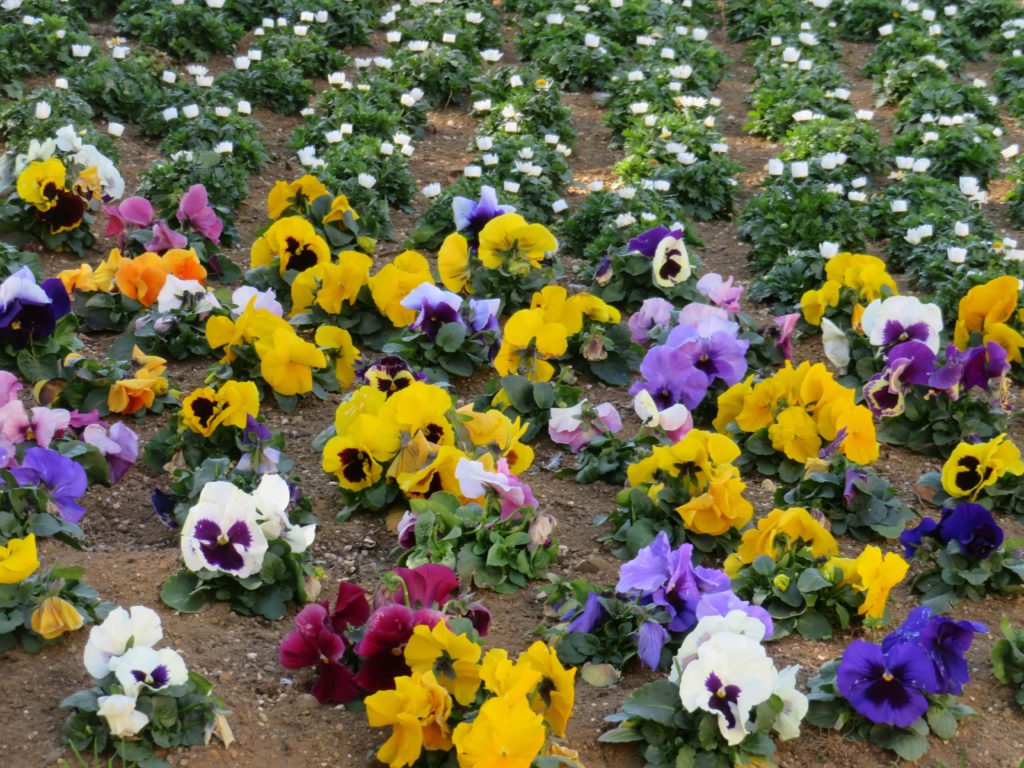
Pansies (Viola x wittrockiana) bring vibrant color to winter gardens, thriving even in chilly temperatures and frost.
These hardy flowers can bloom in winter, adding cheer with their stunning vibrant petals in shades of purple, yellow, orange, and white.
You’ll find that they flourish in hardiness zones 4-10, making them ideal for various climates.
To ensure your pansies thrive, plant them in well-drained soil with exposure to full sun or partial shade.
Regular deadheading of spent flowers encourages continuous blooming, keeping your winter landscape lively.
Whether in garden beds or containers, pansies are a fantastic choice for winter color, showcasing their resilience and beauty throughout the season.
Enjoy their charm as they brighten up your outdoor space!
Hellebore (Helleborus spp.)
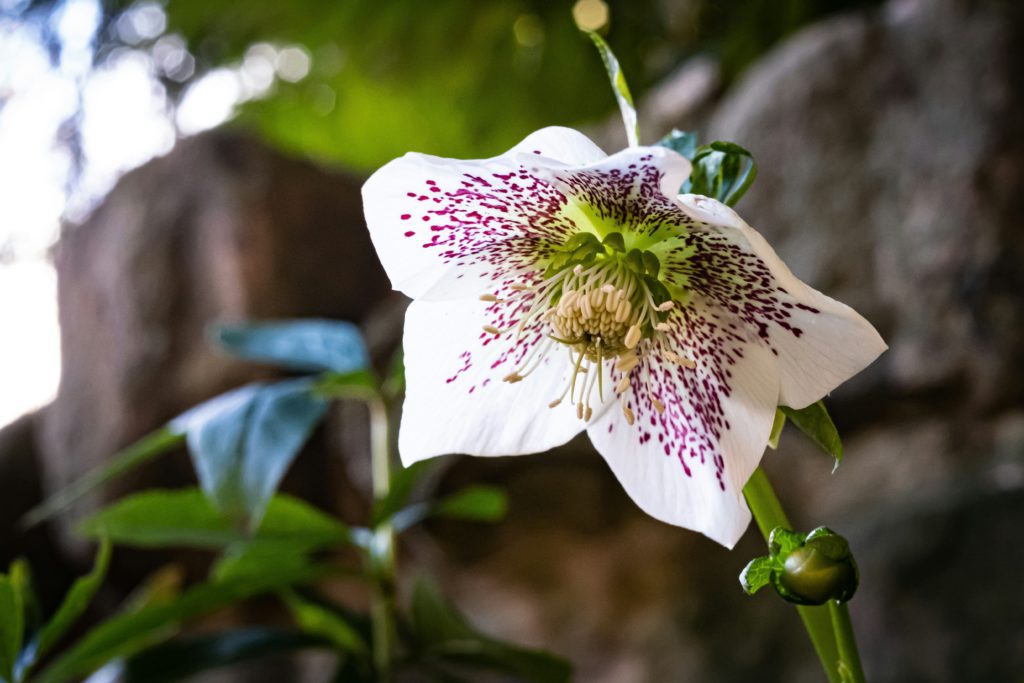
Hellebores, often called Lenten roses, brighten winter gardens with their stunning, cup-shaped flowers that bloom from mid to late winter. These winter bloomers provide a vibrant color palette, featuring hues like white, pink, purple, and green, often with intricate patterns.
Thriving in hardiness zones 4-9, hellebores prefer partial to full shade and well-drained, rich soil for optimal growth. Their evergreen foliage adds year-round interest, remaining attractive even when not in bloom.
However, be cautious: all parts of the hellebore plant are toxic if ingested, so it’s wise to keep an eye on pets and children around these beautiful yet potentially harmful plants. Enjoy the beauty of hellebores while being mindful of their toxicity!
Snowdrop (Galanthus nivalis)

Have you ever spotted delicate snowdrops peeking through the snow, signaling the first signs of spring? These charming flowers, known scientifically as Galanthus nivalis, bloom in late winter, bringing life to the winter landscape.
Standing at 6-12 inches tall, snowdrops are perennial bulbs that thrive in well-drained, moist soil. They prefer full sun to partial shade, making them perfect for woodland gardens or borders.
One of their remarkable traits is their pest-resistance; common garden animals tend to avoid them, allowing them to naturalize beautifully in various settings. However, keep in mind that snowdrops are toxic if ingested, so be cautious when planting them in areas accessible to pets and children.
Enjoy these early bloomers as spring approaches!
Crocus (Crocus spp.)
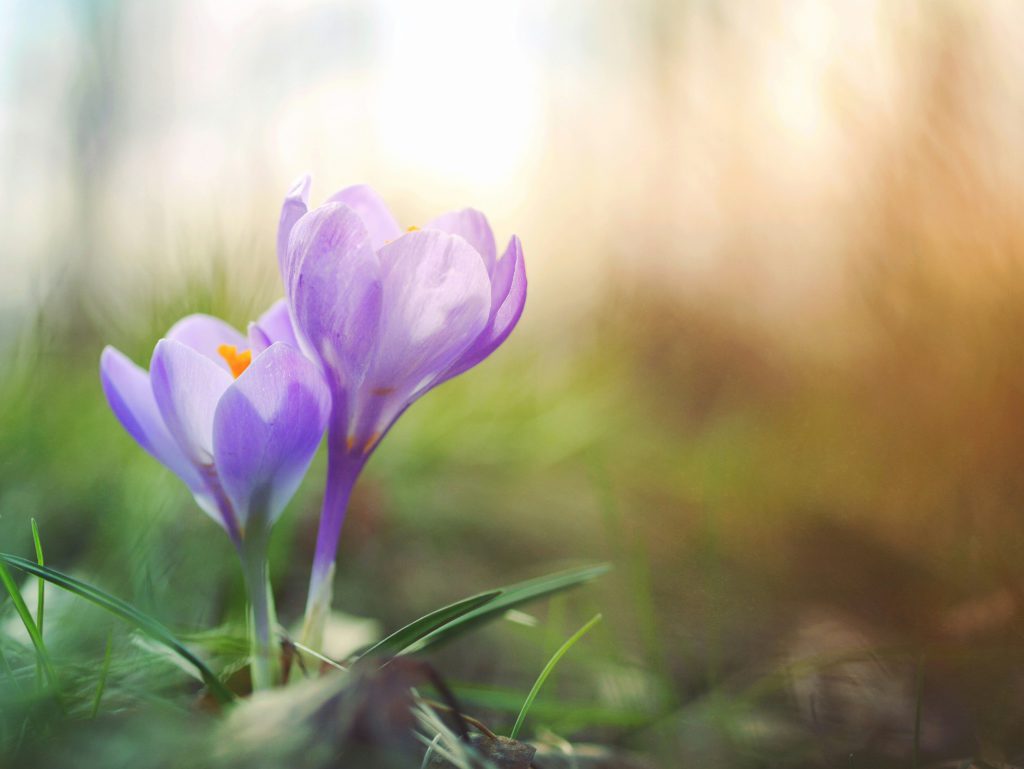
Crocus (Crocus spp.) bursts into bloom in late winter, often emerging through the snow to brighten your garden with vibrant colors. These cheerful flowers come in shades of purple, yellow, and white, making them a delightful sight as they signal the approach of spring.
Crocus thrives in full sun to partial shade, so choose a spot in your garden that receives adequate light. They prefer well-drained soil, which suits their bulbous nature and helps prevent rot.
Plant your crocus bulbs in the fall for a stunning display of early spring blooms. Not only do they enhance your landscape, but they also attract bees and other pollinators, adding life to your winter garden.
Easily hire the best lawn & landscape pros working in your neighborhood.
Winter Jasmine (nudiflorum)
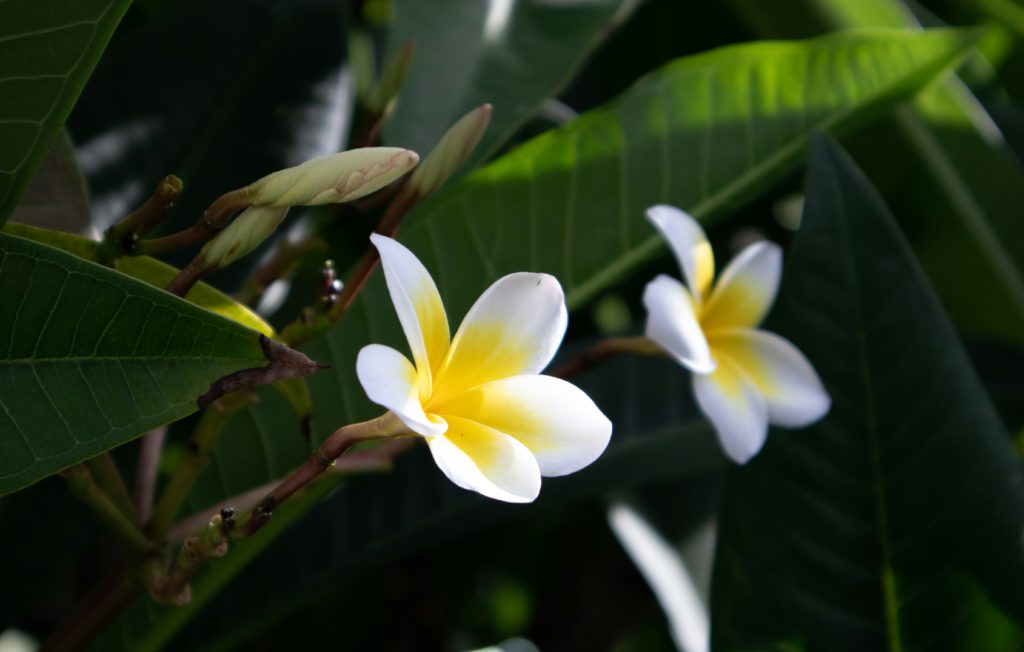
Winter Jasmine (Jasminum nudiflorum) brightens up winter gardens with its vibrant yellow blooms, offering a splash of color when most other plants are dormant.
These bright yellow flowers typically bloom from late winter to early spring, creating a cheerful contrast against the winter landscape.
The winter jasmine thrives in hardiness zones 6-10 and prefers full sun to partial shade, making it versatile for various garden conditions.
As a low-maintenance plant, it’s perfect for slopes and borders, and you can train it to climb or use it as groundcover.
With well-drained soil, this deciduous shrub can grow up to 15 feet tall, ensuring your garden remains lively and attractive even in the colder months.
Witch Hazel (Hamamelis spp.)

While winter jasmine adds vibrant color to your garden, Witch Hazel (Hamamelis spp.) brings a unique charm with its fragrant, ribbon-like flowers that bloom from January through March.
These stunning winter flowers emerge on bare branches, creating a striking contrast against the cold backdrop. The blooms can vary in color from bright yellow to deep red, and their ribbons may curl in the chill, unfurling as temperatures rise.
Known for its citrusy scent, witch hazel attracts early pollinators like bees, making it a vital part of the winter ecosystem.
For optimal growth, plant it in full sun, where this hardy shrub will thrive, bringing beauty and fragrance to your winter landscape.
Winter Aconite (Eranthis hyemalis)
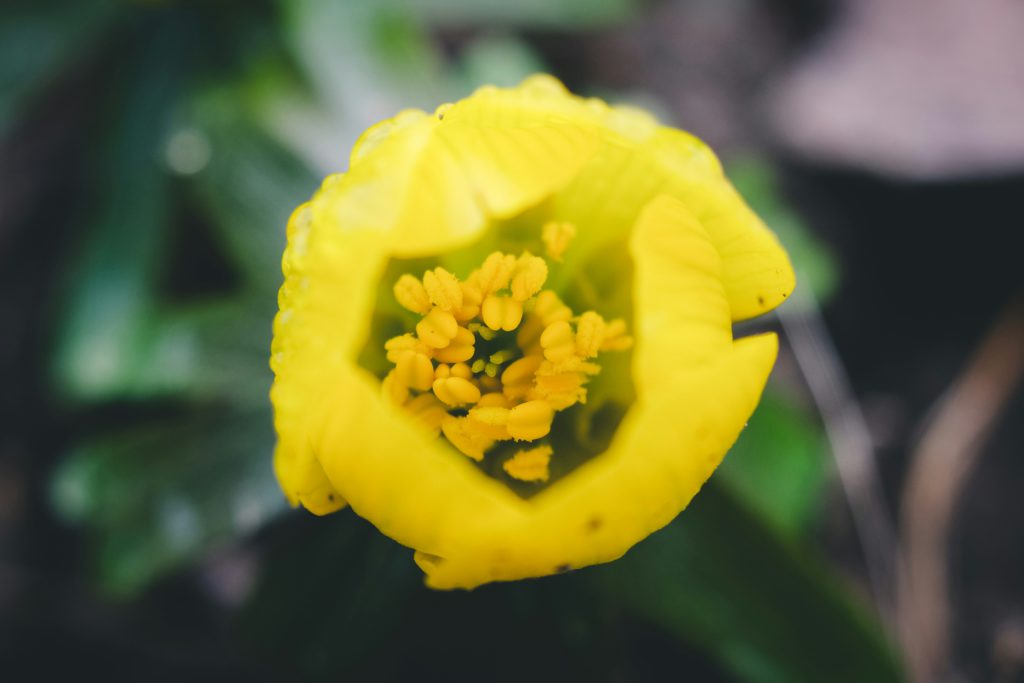
Bringing a splash of sunshine to your winter garden, Winter Aconite (Eranthis hyemalis) blooms with vibrant yellow, buttercup-like flowers that often peek through the snow.
These bright yellow blossoms typically appear from late winter to early spring, creating a cheerful display as they signal the approach of warmer days.
Thriving in hardiness zones 3-7, winter aconite prefers well-drained soil and can flourish in full sun to partial shade.
With a height of just 3-4 inches, this bulbous perennial forms dense carpets of color, making it perfect for garden beds and areas under trees.
Plus, it’s deer and rabbit resistant, so you won’t have to worry about these herbivores munching on your beautiful winter blooms.
Easily hire the best lawn & landscape pros working in your neighborhood.
English Primrose (Primula vulgaris)

The English Primrose (Primula vulgaris) offers a lovely contrast to the bright yellow blooms of Winter Aconite, with its delicate pale-yellow clusters that brighten shaded garden spaces as winter gives way to spring.
This perennial plant thrives in hardiness zones 4-8 and typically begins to bloom in late winter and early spring. Standing at 6-12 inches tall, it prefers partial shade and moist, well-drained soil, making it ideal for woodland gardens.
The English Primrose attracts pollinators, providing them with essential resources during the colder months. You can easily cultivate these charming flowers in garden beds or containers, adding vibrant color and winter interest to your landscape.
Embrace the resilience and beauty of the English Primrose this season!
Ornamental Kale (Brassica oleracea)
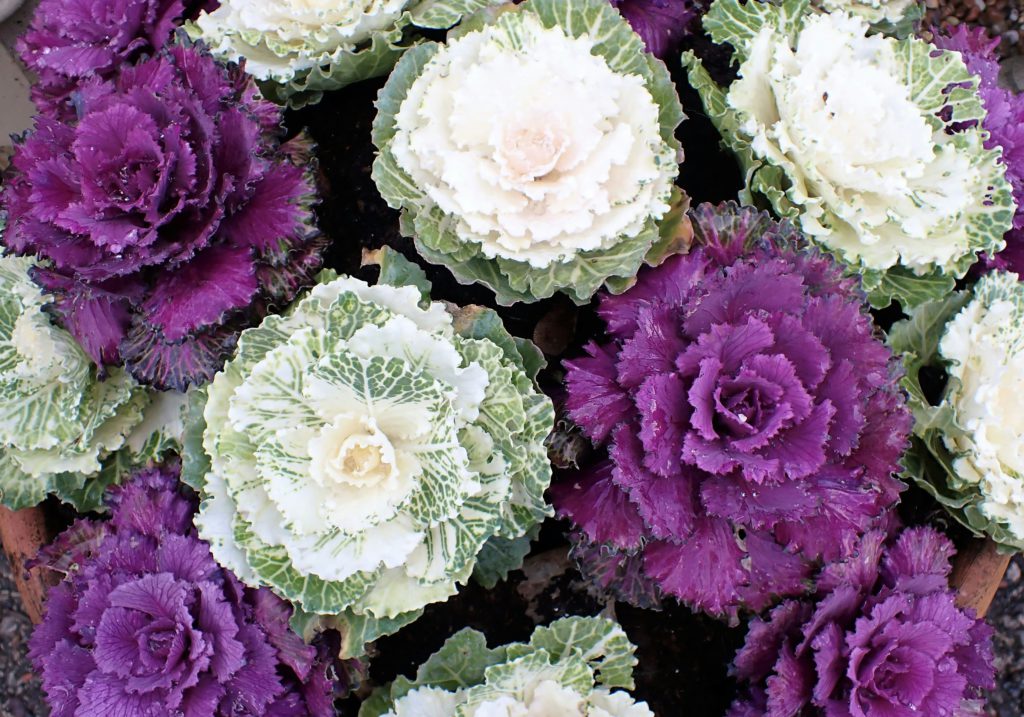
Ornamental Kale (Brassica oleracea) transforms winter gardens with its vibrant rosettes of purple, pink, and white foliage, adding a splash of color even in the coldest months.
This hardy plant thrives in temperatures as low as 5 degrees Fahrenheit, making it a resilient choice for your winter garden. You’ll love how its colorful foliage intensifies in the frost, providing visual interest all season long.
Ornamental kale prefers well-drained soil and can grow in full sun to partial shade, making it versatile for various garden settings, including borders and containers.
Typically grown as an annual, it may also flower in its second year, giving you even more beauty to enjoy during winter’s chill.
Cyclamen (Cyclamen coum)
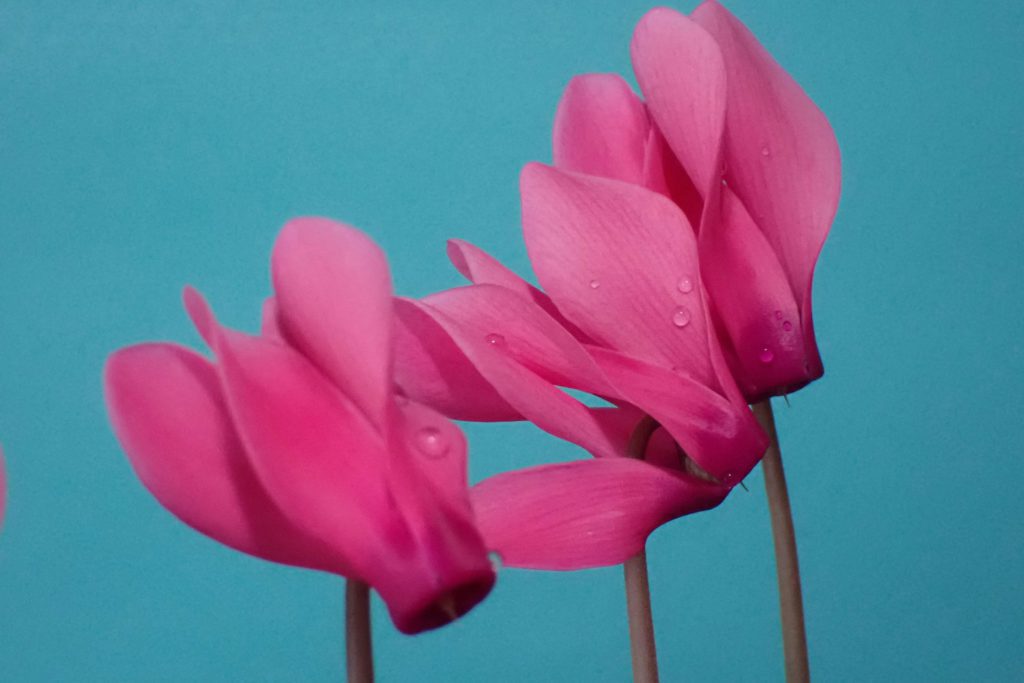
Cyclamen (Cyclamen coum) adds a charming touch to winter gardens with its nodding flowers that bloom from January to March in delightful shades of pink, purple, and white.
These beautiful flowers thrive in light to full shade, making them perfect for woodland gardens or shaded borders.
Growing just 3-4 inches tall and spreading 8-12 inches wide, cyclamen offers excellent ground cover during the winter months.
Its heart-shaped leaves, often marbled, provide visual interest even when the flowers fade.
Plus, cyclamen is low-maintenance and resistant to pests and deer, allowing you to enjoy a vibrant winter garden without the hassle.
Embrace the beauty of these resilient blooms and brighten your winter landscape effortlessly!
How to Incorporate Winter Flowers into Your Landscape
Incorporating winter-blooming flowers like Hellebores and Snowdrops into your landscape can transform a bleak garden into a vibrant winter oasis.
Start by selecting winter flowering plants that thrive in your hardiness zone, focusing on early bloomers like Crocus and Winter Aconite for a striking display. Group these blooms in well-drained soil to maximize their impact.
Mix in evergreen shrubs such as Camellia and Witch Hazel to provide structure and year-round interest. These shrubs not only add greenery but also bloom in late winter, enhancing your garden’s appeal.
To extend color throughout the season, layer plants with varying bloom times, ensuring a continuous display that brightens your landscape during the colder months.
Aim for full sun to boost growth and flowering potential.
Frequently Asked Questions
What Flowers Can Still Bloom in the Winter?
You’ll find several flowers blooming in winter, like Hellebores, Snowdrops, and Winter Jasmine. These resilient plants add vibrant colors to your landscape, lifting spirits and reminding you that beauty can thrive even in the cold.
What Is the Best Flower for Winter?
When considering the best flower for winter, you can’t go wrong with Hellebore. Its vibrant, nodding blooms add color to your garden, thriving in cool temperatures and showcasing resilience against the cold winter landscape.
What Is the First Flower to Bloom in the Winter?
The first flower to bloom in winter is often the Snowdrop. You’ll spot these delicate white blooms pushing through snow as early as late January, signaling the approach of spring and brightening your garden.
What Flowers Bloom in February and March?
In February and March, you’ll see cheerful Winter Aconite, vibrant Crocus, elegant Hellebore, delicate Snowdrops, and beautiful Japanese Pieris. These flowers brighten your garden, bringing a splash of color and life to the still-cold landscape.
Conclusion
Embracing winter flowers can transform your garden into a vibrant retreat even in the cold months.
By incorporating blooms like pansies, hellebores, and snowdrops, you not only brighten your landscape but also support early pollinators.
So, don’t shy away from adding these colorful gems to your garden.
With just a bit of planning, you can enjoy a winter wonderland filled with life and beauty, making those chilly days feel a little warmer and more inviting.



